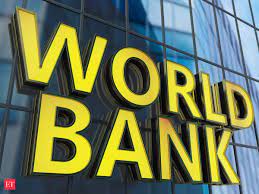
The establishment of the World Bank in 1944 marked a pivotal moment in international history. Tasked with the monumental responsibility of rebuilding war-torn Europe and Japan after the devastating Second World War, the World Bank, officially known as the International Bank for Reconstruction and Development (IBRD), emerged as a beacon of hope and catalyst for global reconstruction and development.
Subheading 1: The Birth of the World Bank Following the end of World War II, the world was left grappling with the immense task of rebuilding shattered economies and infrastructure. In response to this dire need, the World Bank was conceived during the Bretton Woods Conference held in July 1944. It aimed to foster stability, promote economic growth, and facilitate the reconstruction of war-ravaged nations.
Subheading 2: The Mission of the World Bank The World Bank’s primary mission is to alleviate poverty and promote sustainable development by providing financial assistance and technical expertise to its member countries. By offering low-interest loans, interest-free credits, and grants, the institution aims to empower nations to overcome economic and social challenges while fostering long-term growth.
Subheading 3: The Evolution of the World Bank Since its inception, the World Bank has undergone significant changes in its structure and focus. Initially, it focused primarily on post-war reconstruction, providing financial support for infrastructure projects and essential industries. However, over time, the institution recognized the importance of addressing broader development issues, such as education, healthcare, and governance.
Subheading 4: World Bank Initiatives The World Bank implements various initiatives to achieve its objectives. One such initiative is the International Development Association (IDA), established in 1960, which provides interest-free credits and grants to the world’s poorest countries. Additionally, the bank invests in projects that prioritize environmental sustainability, climate change adaptation, and social inclusivity.
Subheading 5: Impact and Results Over the years, the World Bank has made significant contributions to global development. It has facilitated the construction of critical infrastructure, including roads, bridges, and schools, fostering economic growth and improving the quality of life for millions of people. By promoting good governance practices, the institution has also played a crucial role in enhancing transparency and accountability in member countries.
Conclusion: The World Bank’s establishment in 1944 marked a turning point in global history. With a steadfast commitment to rebuilding war-torn nations, alleviating poverty, and fostering sustainable development, the institution has become a leading force in international cooperation. Through its various initiatives and programs, the World Bank continues to shape the future by empowering nations and building a more prosperous and inclusive world for all.